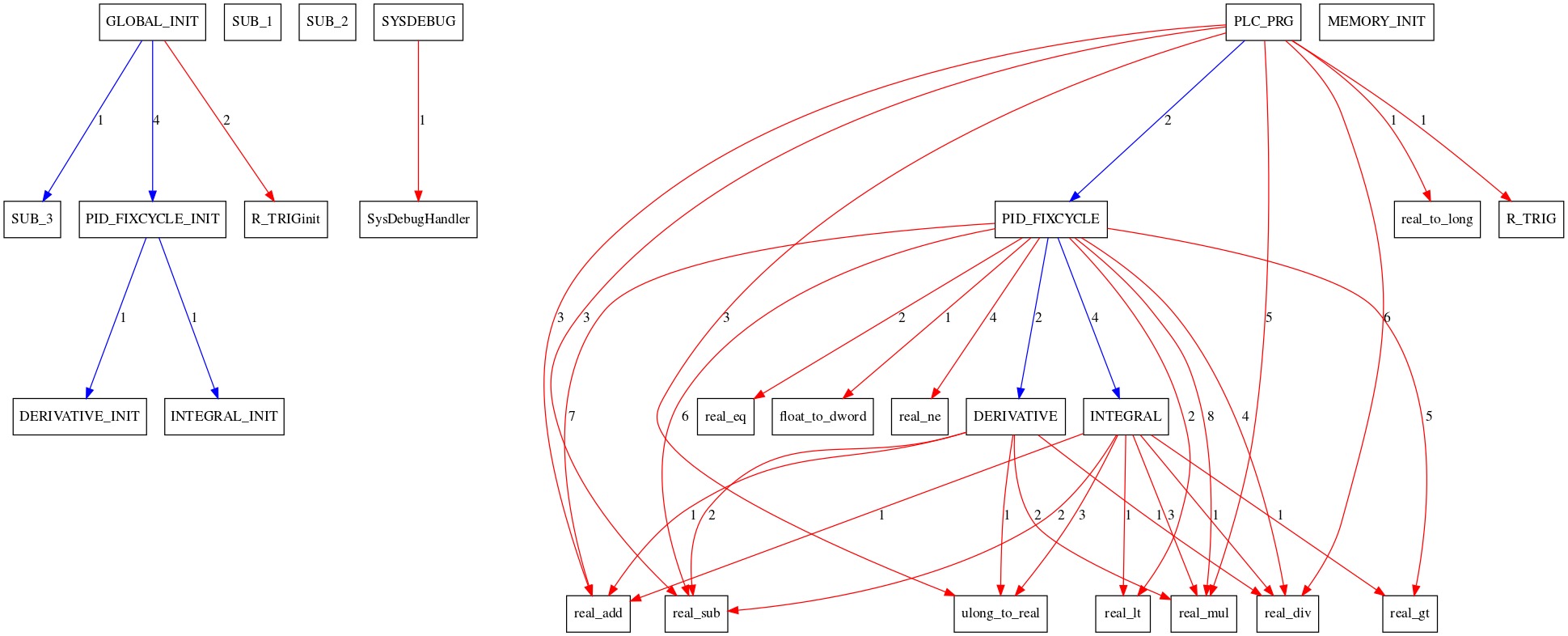ICSREF is a modular framework that automates the reverse engineering process of CODESYS binaries compiled with the CODESYS v2 compiler.
_______________ ____ ____________
/ _/ ____/ ___// __ \/ ____/ ____/
/ // / \__ \/ /_/ / __/ / /_
_/ // /___ ___/ / _, _/ /___/ __/
/___/\____//____/_/ |_/_____/_/
by Tasos Keliris @koukouviou
If you find our work interesting and use it in your (academic or not) research, please cite our NDSS'19 paper describing ICSREF:
Anastasis Keliris, and Michail Maniatakos, "ICSREF: A Framework for Automated Reverse Engineering of Industrial Control Systems Binaries", in NDSS'19.
Bibtex:
@inproceedings{keliris2019icsref,
title={{ICSREF}: A Framework for Automated Reverse Engineering of Industrial Control Systems Binaries},
author={Keliris, A. and Maniatakos, M.},
booktitle={Network and Distributed System Security Symposium (NDSS)},
year={2019}
}

The framework can:
- Perform core analysis of arbitrary
PRGprograms. Core analysis includes: - Delimitation of binary blobs (i.e., functions/routines).
- Identification of calls to dynamic libraries.
- Identification of calls to static libraries (other locations in the same binary).
- Identification of how many and which physical I/Os the binary uses, provided a TRG file that contains the memory mappings of physical I/Os of the particular device the binary is compiled for.
- Perform core analysis of arbitrary
- Identify known library functions included statically in the binary:
- Using an opcode-based hash matching technique
- Using experimental signature-based techniques. This is at the moment only implemented for Proportional-Integral-Derivative (PID) CODESYS library functions.
- Extract arguments passed to static functions. This is at the moment only implemented for the PID_FIXCYCLE CODESYS library function, but it is trivial to extend this to other functions of interest.
- Argument extraction is powered by symbolic execution and
angr - It can handle cases where the arguments are not impacted by I/O measurements (i.e., defined globally or passed directly)
- Argument extraction is powered by symbolic execution and
- Plot SVG graphs of the analyzed binary, including:
- Calls between static functions
- Calls to dynamic functions
- Hyperlinks to the disassembly listings of each function from the SVG
Graphs are powered by Graphviz. Here's a neat example:
The framework supports an interactive mode, where all the processing modules are loaded. Users can further investigate and analyze their binaries by exploring the different options. The interactive environment also offers useful help docstrings.
(icsref) me@example:$ ./icsref.py
ICS Reverse Engineering Framework
_______________ ____ ____________
/ _/ ____/ ___// __ \/ ____/ ____/
/ // / \__ \/ /_/ / __/ / /_
_/ // /___ ___/ / _, _/ /___/ __/
/___/\____//____/_/ |_/_____/_/
author: Tasos Keliris (@koukouviou)
Type <help> if you need a nudge
reversing@icsref:$
reversing@icsref:$ help
Documented commands (type help <topic>):
========================================
__changepid changepid exp_pid_match history pyscript set
__replace_callname cleanup graphbuilder load quit shell
_relative_load cmdenvironment hashmatch pidargs run shortcuts
analyze edit help py save show
See INSTALL
The ICSREF API is documented in a Read the Docs style. Once you download the repository you can traverse the docs directory and open index.html in your favorite browser.
ICSREF, as all things good in life, is based on the shoulder of giants. The framework relies on symbolic execution using angr for performing the most interesting analyses such as calculating offsets for static calls and the arguments to function calls. Disassembly listings for the graphing module are generated using the amazing r2. The interactive mode of the tool is powered by the cmd2 python tool. Beautiful documentation is generated with Sphinx and the sphinx_rtd_theme.
A big thank you to everyone contributing on this project. See CONTRIBUTORS
